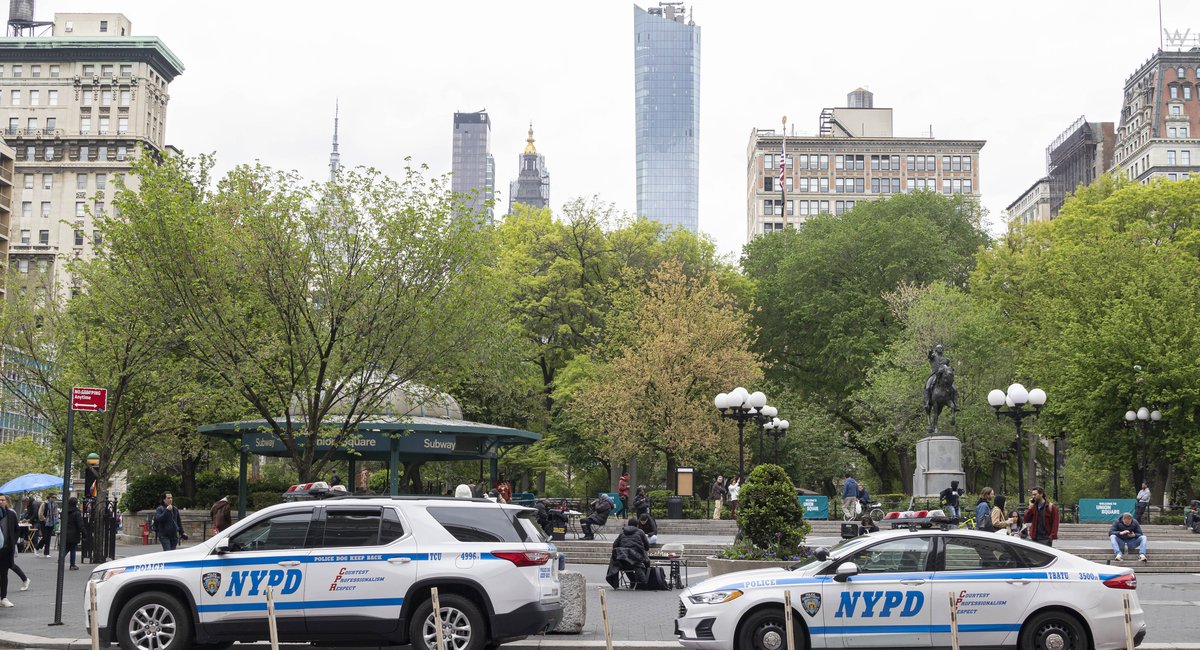Traffic stops like the one NYPD Officer Jonathan Diller, 31, was making when he was shot and killed on Monday night are the most common police encounters with civilians — and potentially the most dangerous, according to experts.
State Attorney General Letitia James suggested that the department stop making traffic stops in 2020, following an encounter in which an NYPD officer fatally shot a man who was pulled over for not wearing a seatbelt, according to police.
But the NYPD continues to make traffic stops, including more than 1 million in the first 18 months of Mayor Eric Adams’ tenure, according to a 2023 study by the nonprofit New York Civil Liberties Union.
In the wake of Diller’s death, some experts are again questioning whether officers should enforce minor traffic infractions, citing concerns for their safety and that of drivers.
Traffic stops are dangerous because “you never know who you’re dealing with,” said Von Kliem, a former police officer and CEO of police research and training group Force Science. “There’s a constant tension between remaining vigilant but not becoming militant and paranoid.”
Neither the NYPD nor the Police Benevolent Association, the city’s largest police union, responded to inquiries for this story.
Diller is the first NYPD officer to be killed on duty since January 2022. Nationally, more than 20% of police officers who were killed on duty between late 2016 and 2021 — a total of 60 officers — died at the hands of drivers who had been pulled over, according to a New York Times investigation.
City officials still invoke a painful moment in the NYPD’s history, when Officer Russel Timoshenko was fatally shot in the face twice by someone sitting in the back of a car during a vehicle stop in Brooklyn in 2007.
Policing experts said traffic stops are deadlier for drivers and passengers than for police officers. From late 2016 to 2021, police killed more than 400 unarmed drivers or passengers across the country during traffic stops, according to the New York Times report. That’s a rate of about 1.5 civilians killed per week.
Diller and another officer approached a car illegally parked at a bus stop in Far Rockaway, Queens, around 5:45 p.m. on Monday, the NYPD said. Diller was a member of the department’s Community Response Team, an unmarked car unit tasked in part with getting guns off the street.
Police officials said Diller asked a man to get out of the car, but the man refused and shot Diller in the torso below his bulletproof vest. Diller’s partner then shot the man, who is in stable condition, according to officials.
Police have not released the details of the interaction between the officers and the men in the car, including why the officers asked one of the men to exit the vehicle.
Ayesha Bell Hardaway, a criminal law professor at Case Western Reserve University who has researched police traffic stops, said officers’ performance reviews are tied to the number of stops they make. And Edwin Raymond, who left the NYPD in 2023 and is now a police reform advocate, said the department considers both pedestrian and traffic stops as well as arrests when deciding which officers to promote.
“You make the stop for anything, but really you’re just looking for guns,” he said. “That’s the holy grail. That’s the career-maker.”
“The objective is always to search the car and the people in the car,” Raymond added.
Michael Gennaco, a former federal civil rights prosecutor and founder of the Office of Independent Review, a police accountability and oversight group, agreed that the NYPD uses traffic stops to search for guns.
“It’s a heck of a way to develop a gun strategy,” he said “The tragedy of losing an officer isn’t worth getting a gun off the street.”
Car stops that end in violence have made headlines when civilians have been killed by police, including the deaths of Tyre Nichols in Memphis, Tennessee, in 2023 and Philando Castile in St. Paul, Minnesota, in 2016. Nearly 90% of New Yorkers arrested during traffic stops are Black or Latino, according to an NYCLU analysis shared with Gothamist.
Brittany Kriegstein contributed reporting.




